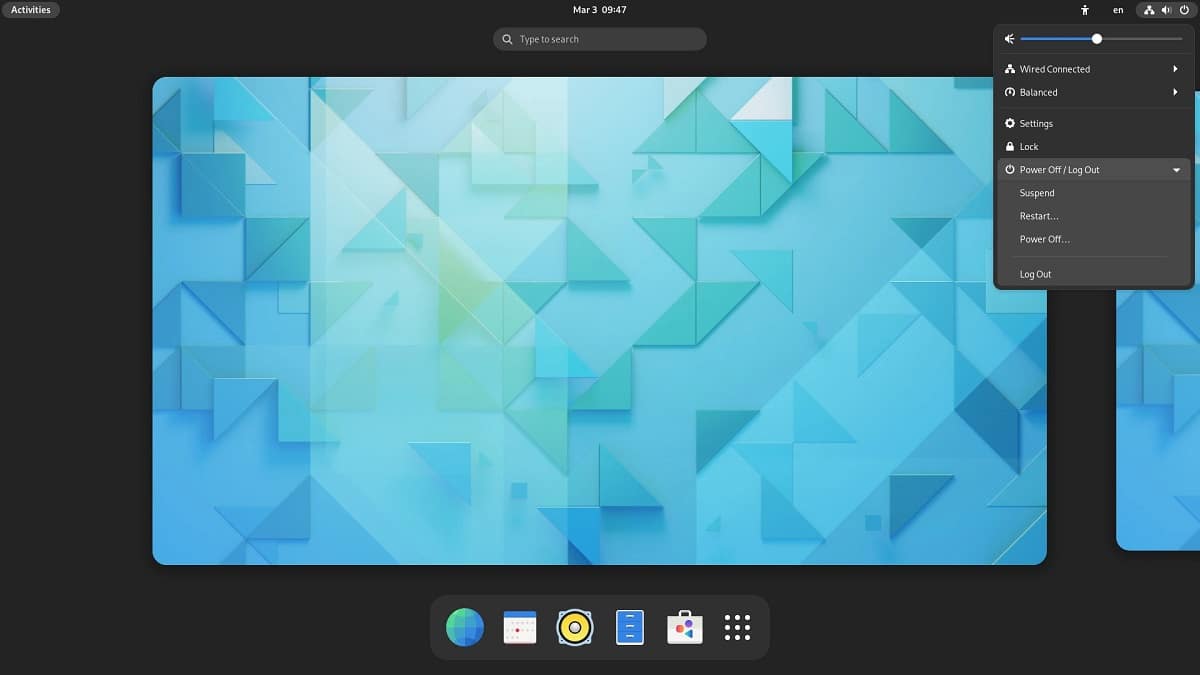
After six months of development the launch of the new version of GNOME 42, version in which implemented global settings for dark style of the interface design, informing applications about the need to enable a dark theme instead of a light one.
Dark mode is enabled in the "Appearance" panel and is compatible with most GNOME applications, as well as with all normal desktop backgrounds. Apps have the ability to define their own style settings, which can be used, for example, to enable a light or dark appearance for individual apps, independent of the overall system style.
La interface for creating screenshots has been redesigned, which provides integration with the screenshot tool and provides the ability to create a snapshot of a specific part of the screen or a separate window. After pressing the Print Screen key, a dialog box is displayed that allows you to select the screen area and mode for saving a single image or recording a video.
Many applications have been migrated to GTK 4 and libadwaita library, which offers out-of-the-box widgets and objects for building GNOME HIG-compliant applications that can adapt responsively to any screen size.
Another of the changes that stands out is system UI style updated and GNOME Shell was visually unified with the new application implementation that was converted to use Libadwaita.
Updated GNOME Settings configurator interface, which is now also based on libadwaita. Redesigned panel layouts to customize the look, apps, display, languages, and users.
Have been added two new apps to the list of recommended applications for inclusion in GNOME installations by default: the text editor and the console terminal emulator. these apps use GTK 4, offer a tabbed interface, support a dark theme and they support their own set of styles that allow you to switch to a light or dark layout independently of other apps. The Text Editor uses automatic saving of changes to protect against loss of work due to a crash.
Epiphany includes hardware-accelerated rendering, provides smoother scrolling, prepares for the transition to GTK 4, updated the built-in PDF viewer (PDF.js), and added dark theme support.
El file manager provides the ability to navigate file paths in the panel, updated icons, and a new interface for renaming files and directories. Significantly improved file indexing in the Tracker search engine, reduced memory consumption, and faster startup.
El video player uses OpenGL based widgets and supports video decoding hardware-accelerated, plus video playback integration with GNOME Shell has been improved through the use of the MPRIS standard, which defines tools for remote control of media players.
Of the other changes that stand out:
- GNOME Boxes, the appearance of the settings has been changed and the interface has been adapted to different screen sizes.
- Improved support for operating systems that use UEFI.
- Added the ability to use the RDP protocol instead of VNC to the remote desktop access tools.
- RDP is enabled in the settings in the "Sharing" panel, after which the session with the remote system is automatically established.
- Significantly improved input processing: Reduced input lags and increased responsiveness on loaded systems. The optimizations are especially noticeable in graphics-intensive games and applications.
- Rendering of apps running in full-screen mode has been optimized, which has, for example, reduced power consumption when playing full-screen videos and increased FPS in games.
- The Clutter library and related components Cogl , Clutter-GTK and Clutter-GStreamer have been removed from the GNOME SDK
- Developers are encouraged to port their programs to GTK4, libadwaita and GStreamer.
If you are interested in knowing more about it, you can consult the details in the following link.
Finally, For those interested in evaluating quickly the capabilities of GNOME 42 (without the need to install the desktop), builds are offered specialized live based on openSUSE and an installation image prepared as part of the initiative GNOME-OS and besides that GNOME 42 is also already included in the experimental version of Fedora 36.